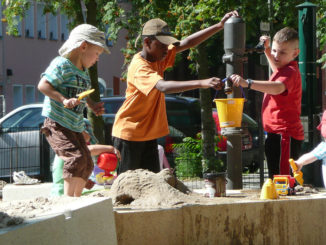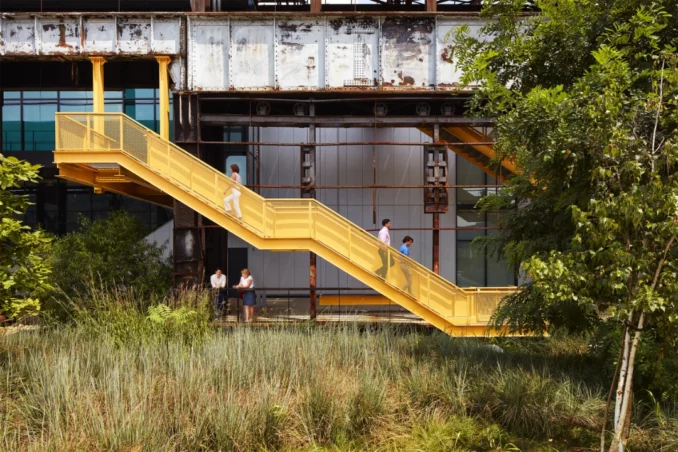
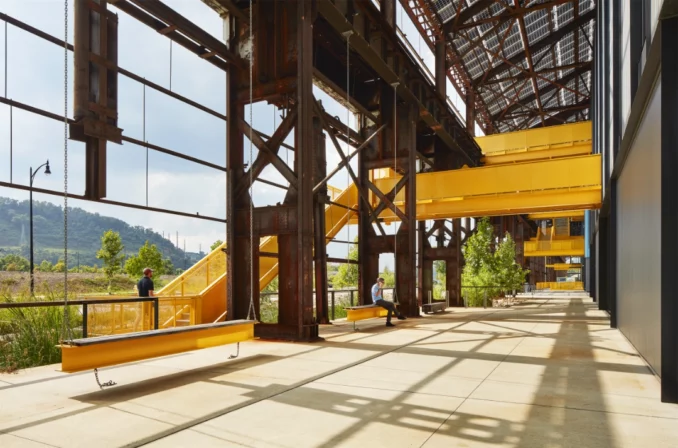
Mill 19 sits at the heart of Hazelwood Green, Pittsburgh’s largest riverfront development. Nestled between the Monongahela River and the Hazelwood community, Mill 19 is the catalytic transformation of the former Pittsburgh J&L Steel Company into a sustainable advanced manufacturing research center enveloped by an immersive public landscape.
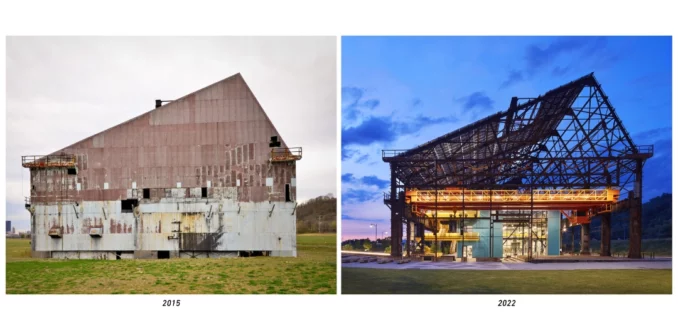
The project celebrates a bold approach to adaptive reuse by exposing its iconic ¼ mile-long steel skeleton as a new landscape and green infrastructure armature and installing a sequence of high-tech office, lab, and manufacturing structures within the historic frame. The landscape architects identified opportunities for deconstruction and preservation of the exoskeleton, scaling landscape interventions to celebrate the tectonics of the structure and provide opportunities to gather, explore, and relax amidst expansive wild rubble and wetland gardens.
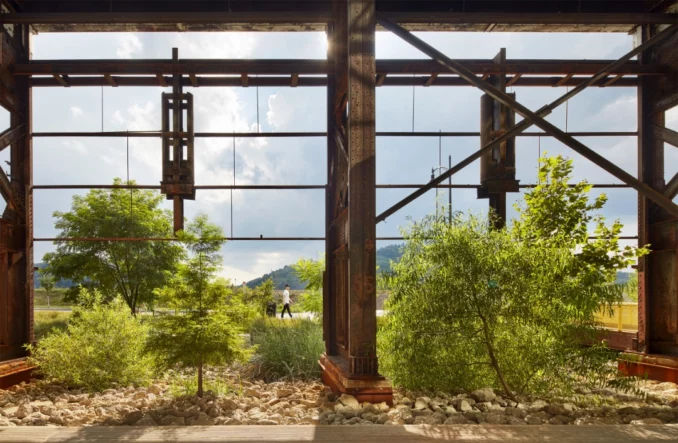
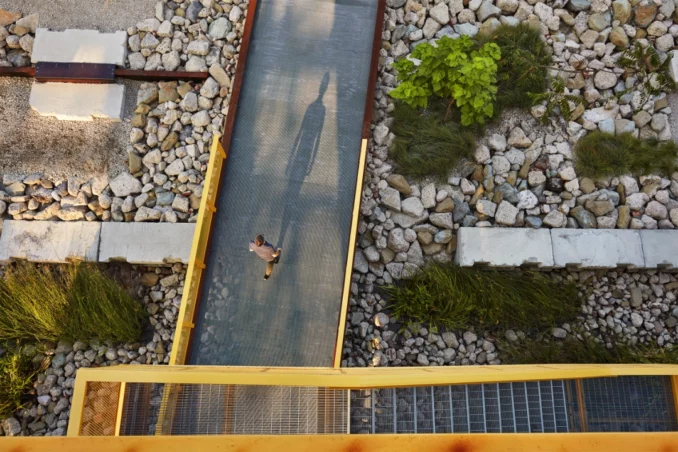
Anchoring the southern end of the Mill is the South Porch, a public plaza that hosts outdoor movies, concerts, and dance performances. A continuous Loggia runs north from the South Porch, welcoming the community into a series of gathering spaces that include occupiable platforms, alcoves with I-beam swings, reclaimed concrete terraces, social lounges, public art installations, and floating walkways. Vertical circulation takes the form of dynamic yellow bridges, stairs, and overlooks that weave through the exoskeleton and provide spectacular views of Downtown.
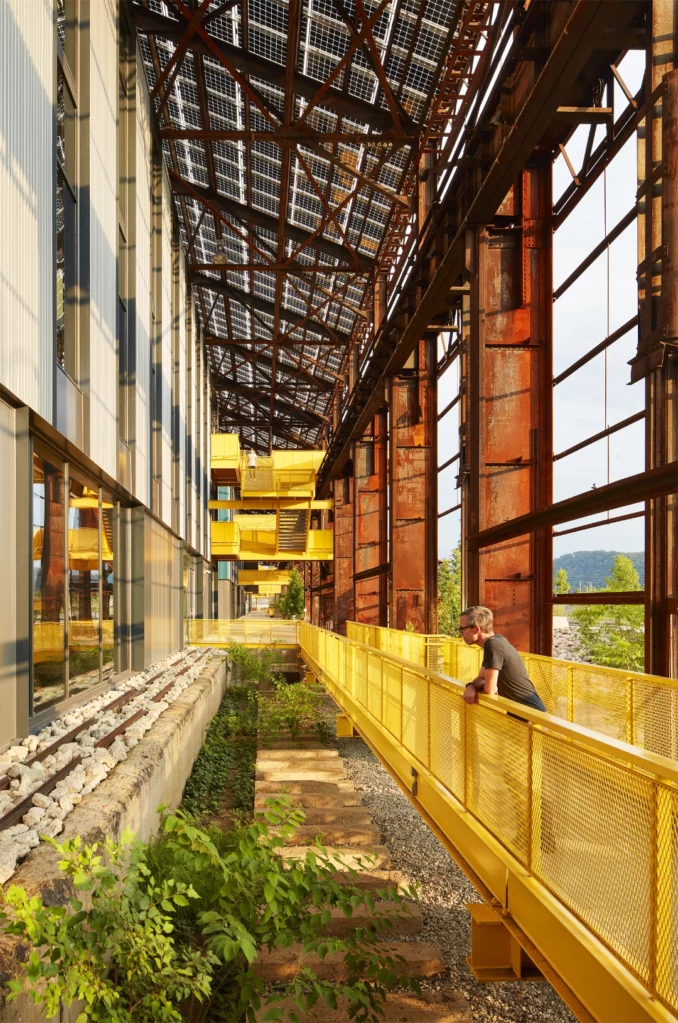
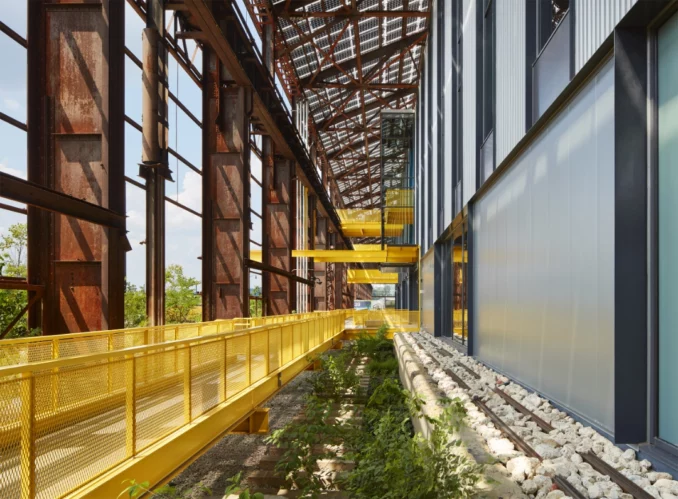
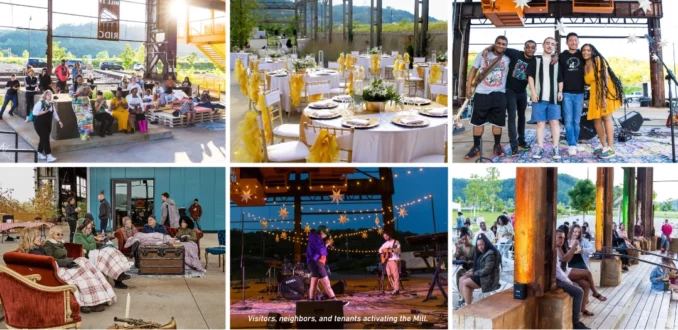
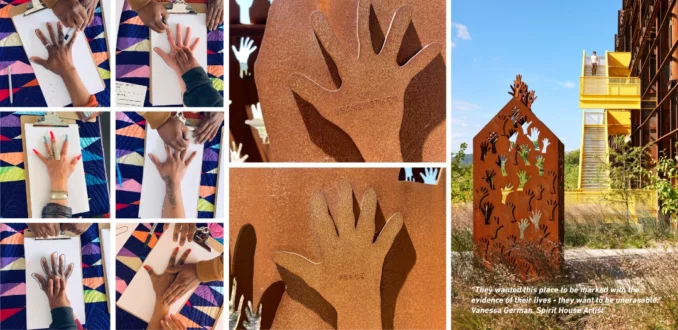
RESILIENCE
A range of sustainable landscape strategies help the project meet LEED-NC v4 gold certification goals, including recycled site materials, stormwater management facilities, and native plantings designed to maximize carbon sequestration, pollinator habitat, and biodiversity.
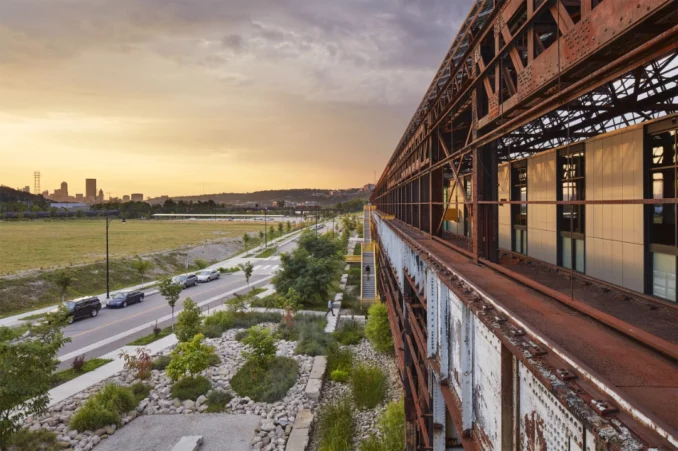
The inability to infiltrate stormwater above contaminated soils in the southern end of the Mill was the site’s most significant constraint and greatest opportunity. A new 12’-wide water channel runs along the Loggia and visibly conveys 1.1 million gallons of rainwater through a sequence of wetland retention basins and infiltration basins. Overflow from larger rain events is collected in an underground cistern to refill the water features for later evaporation. The combination of infiltration, storage, retention, and evaporation strategies allows 87% of the stormwater to be managed on-site.
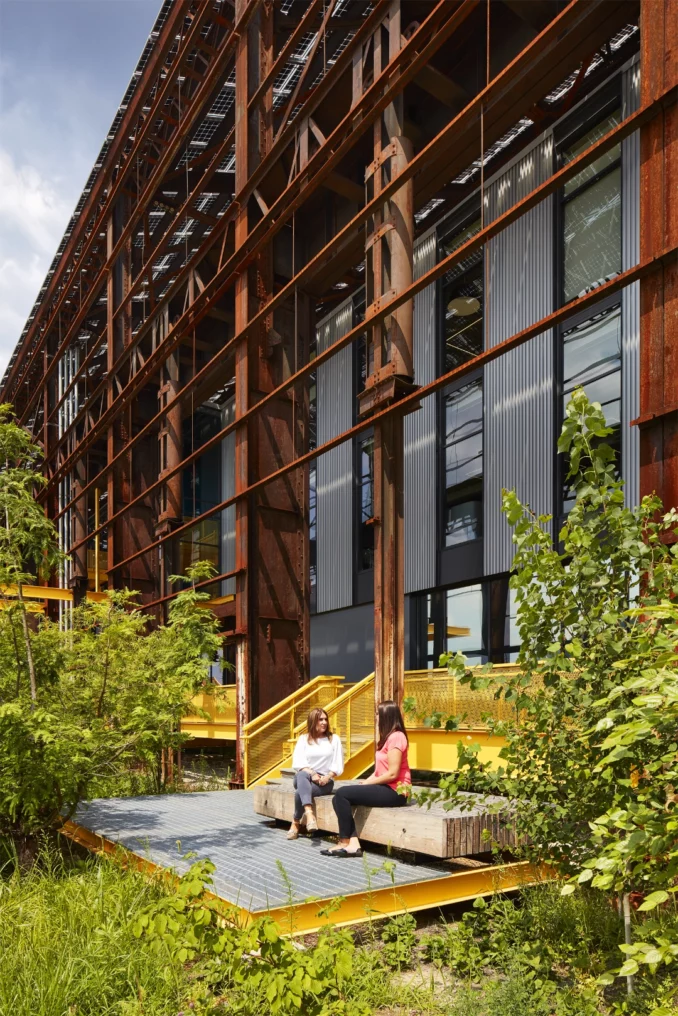
Salvaged steel from the exoskeleton was reassembled as custom furniture and site elements. The design repurposed the original concrete slab for stepped terraces, rail ties, and crushed “rubble” for informal surfacing materials and garden mulch. Concrete bunker blocks and reclaimed limestone boulders from an old retaining wall frame the water channel.
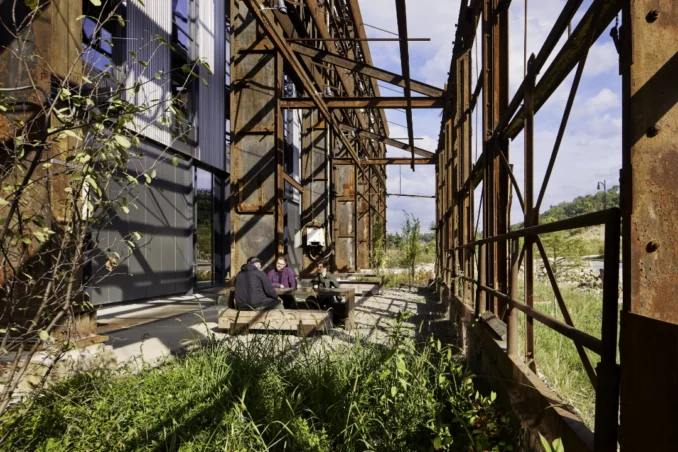
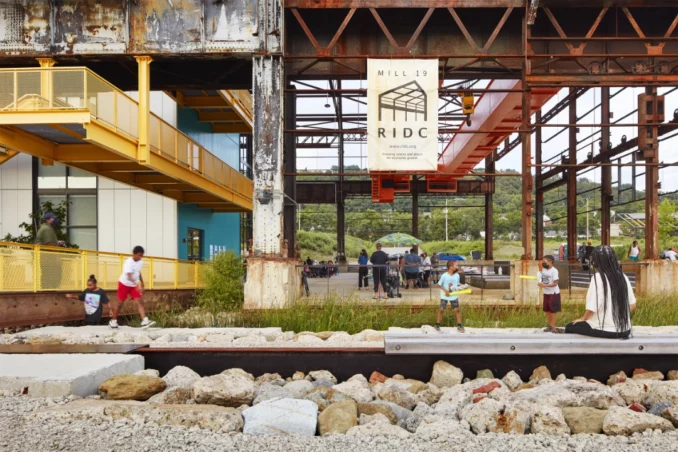
This transformation of this former industrial steel mill that was once a source of significant environmental pollution and ecological contamination into a regenerative site focuses on a greater presence of biodiversity through careful selection of resilient native plant species and the natural return of native creatures to inhabit the large percentage of vegetated open space. The selected hardy plants can handle stressful weather conditions and alleviate the damaging ecological impact of stormwater runoff off site. Several paths in, around, and through the landscape bring visitors into direct relationships with the vegetation and facilitate experiences with the many ways that the design has fostered and prioritized the regional ecosystem.
Spontaneous plant species such as sumac, black locust, willow, quaking aspen, ferns, and sedges form the backbone of an array of wild gardens. The planting design embodies the unruly and tenacious qualities of post-industrial landscapes, providing substantial cost-effective ecological services that are low maintenance. The design integrates aggressive disturbance-adapted species that store carbon at a faster rate with slow growing native species that sequester considerable amounts of carbon over time.
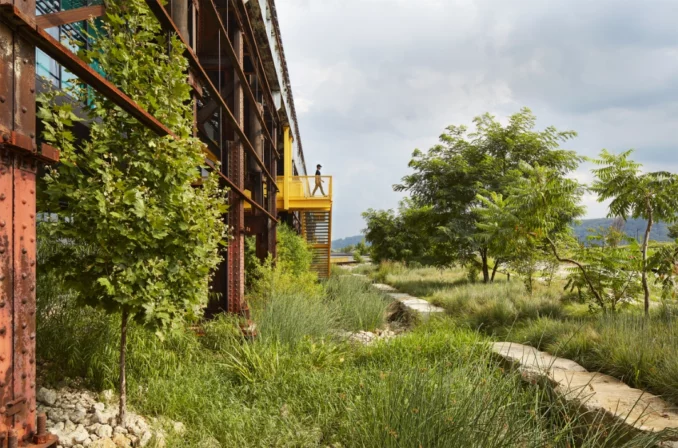
IMPACT
The closure of the last operating steel mill in Pittsburgh left a wake of uncertainty about the future for the community’s residents. Mill 19’s design approach was to provide a community-facing space that engages and welcomes the residents who have felt excluded from progress happening in recent years. The design integrates human-scaled moments in a monumental setting, honoring industrial legacy while providing playful, immersive, and performative landscapes that offer a cleaner, safer environment for play and inhabitation. Through a community-engaged public art selection process, the design team listened to the struggles caused by changing economic conditions and provided art installations that uplifted communal ownership, healing, and pride in their community heritage at Mill 19.
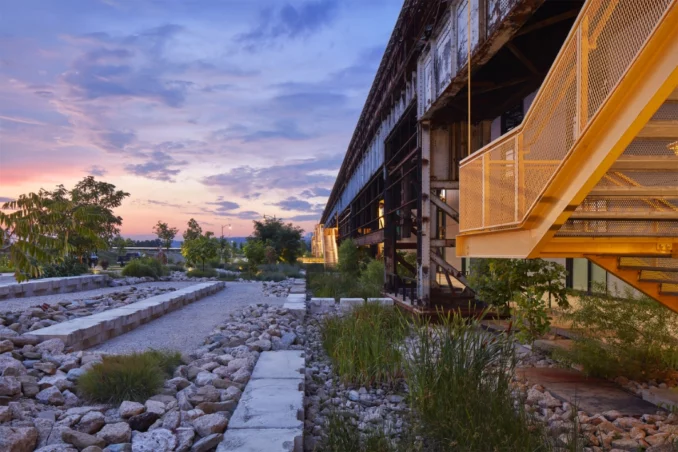
Mill 19
Landscape Architect: TEN x TEN
Collaborators: MSR Design, D.I.R.T. studio, R3A, Atelier Ten, Bala Consulting Engineers, Lennon Smith Souleret Engineering, Carla Gallina
Image Credit: Gaffer Photography

